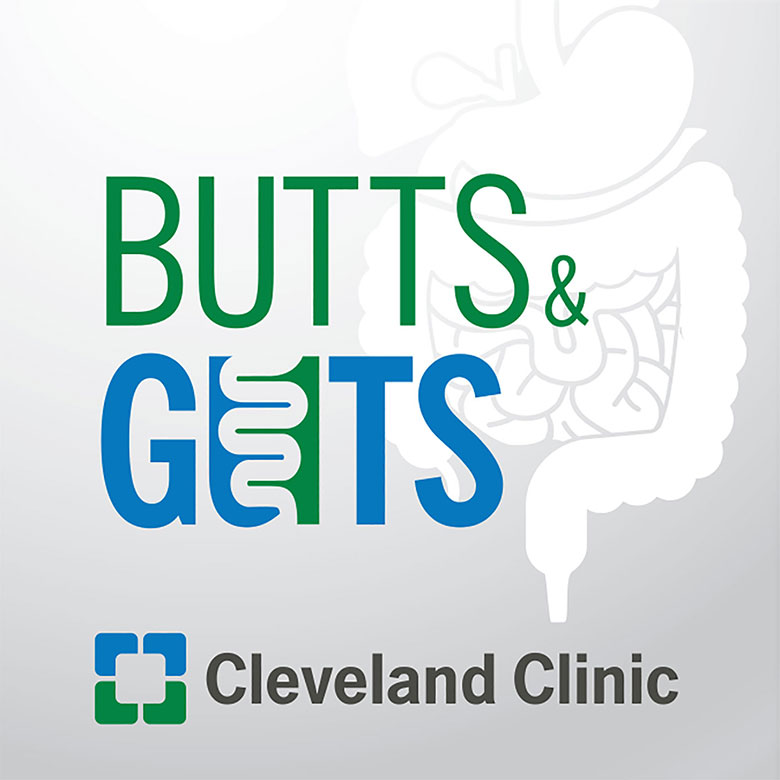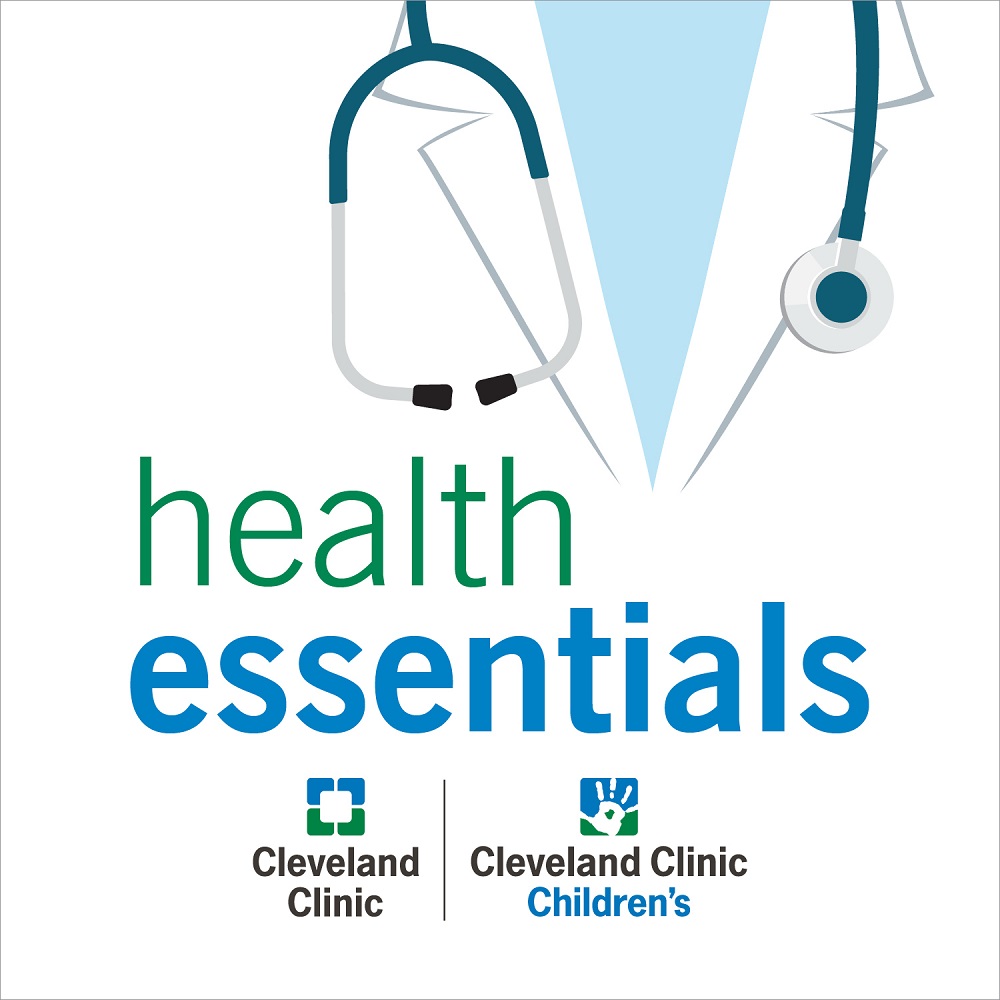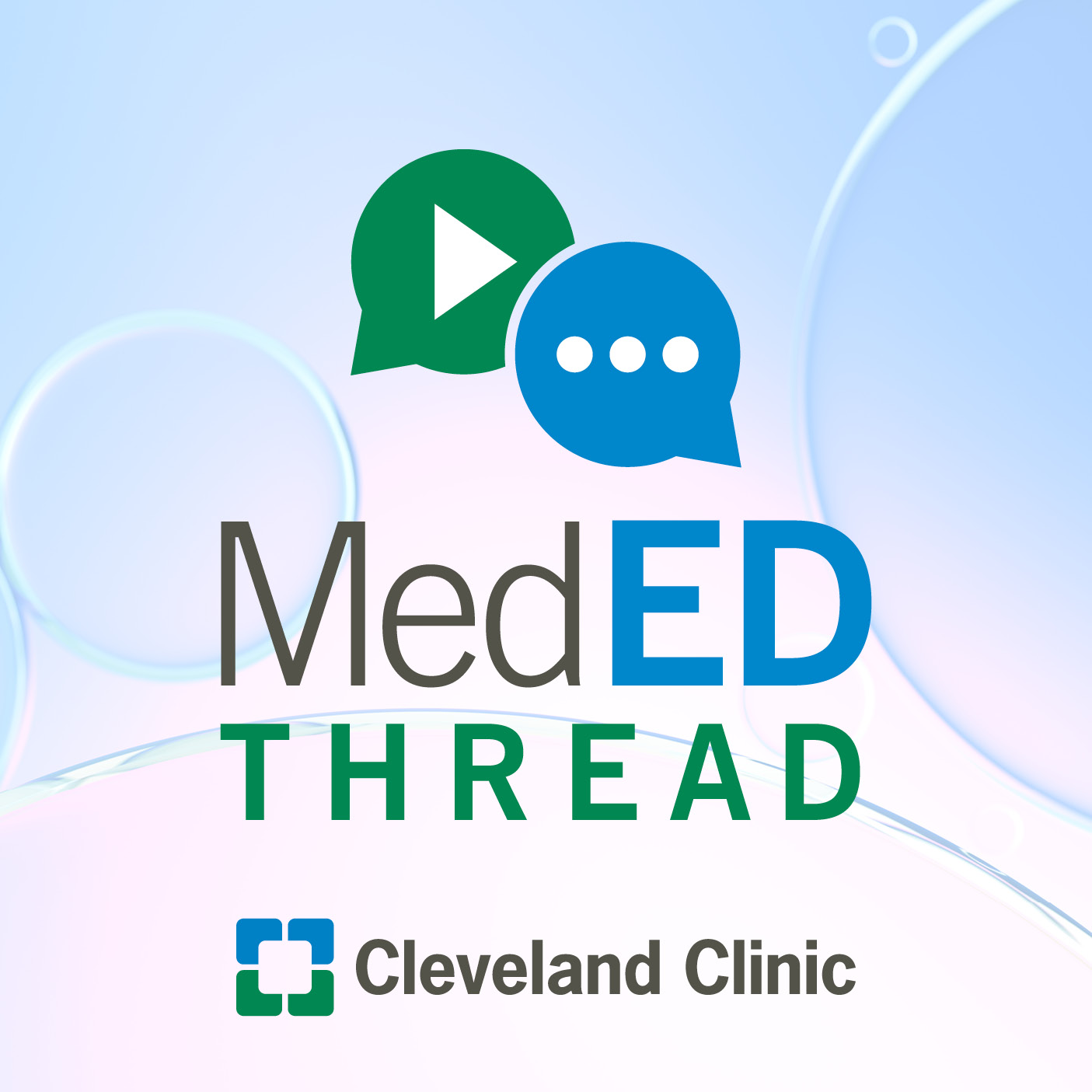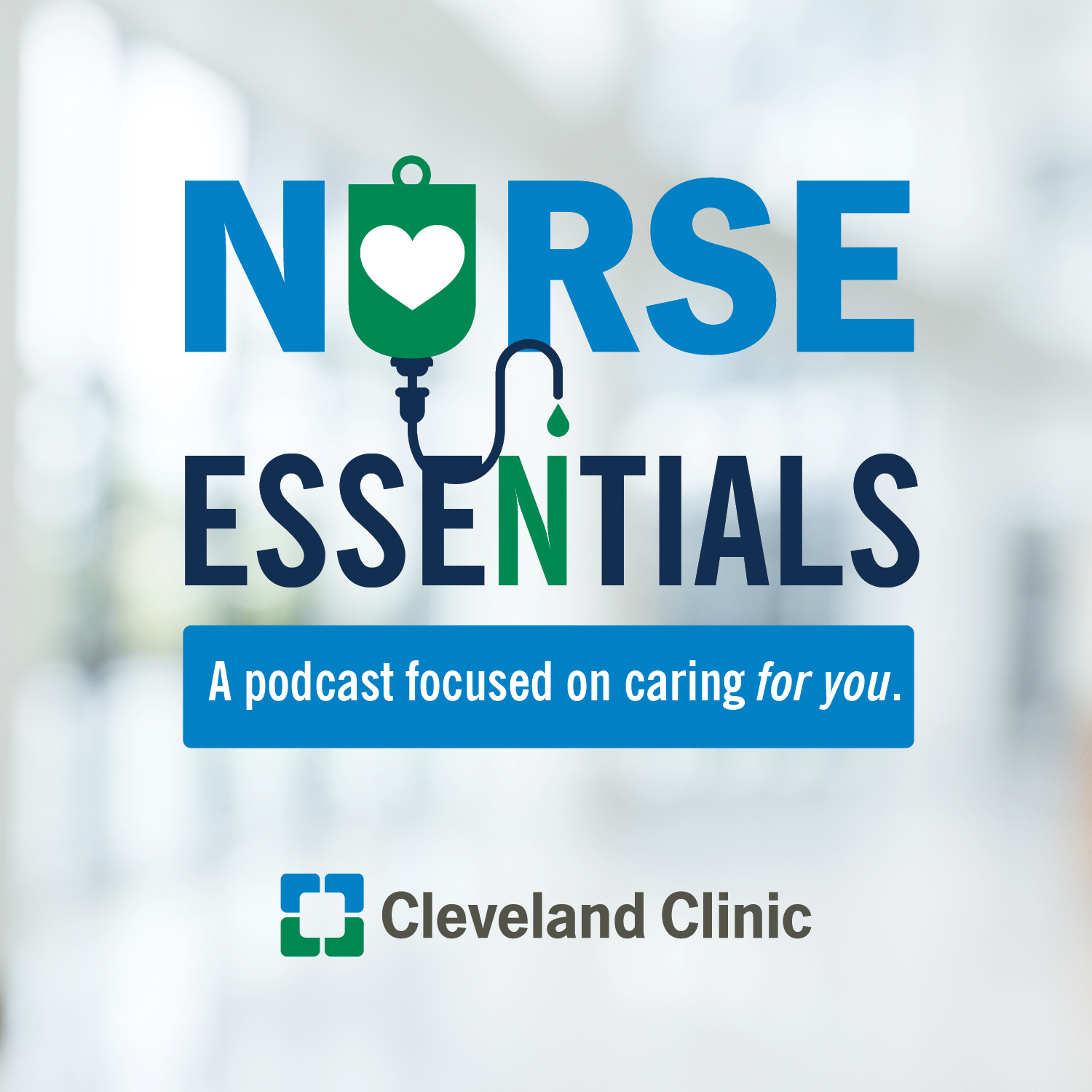Early OB Visits and Models of Prenatal Care
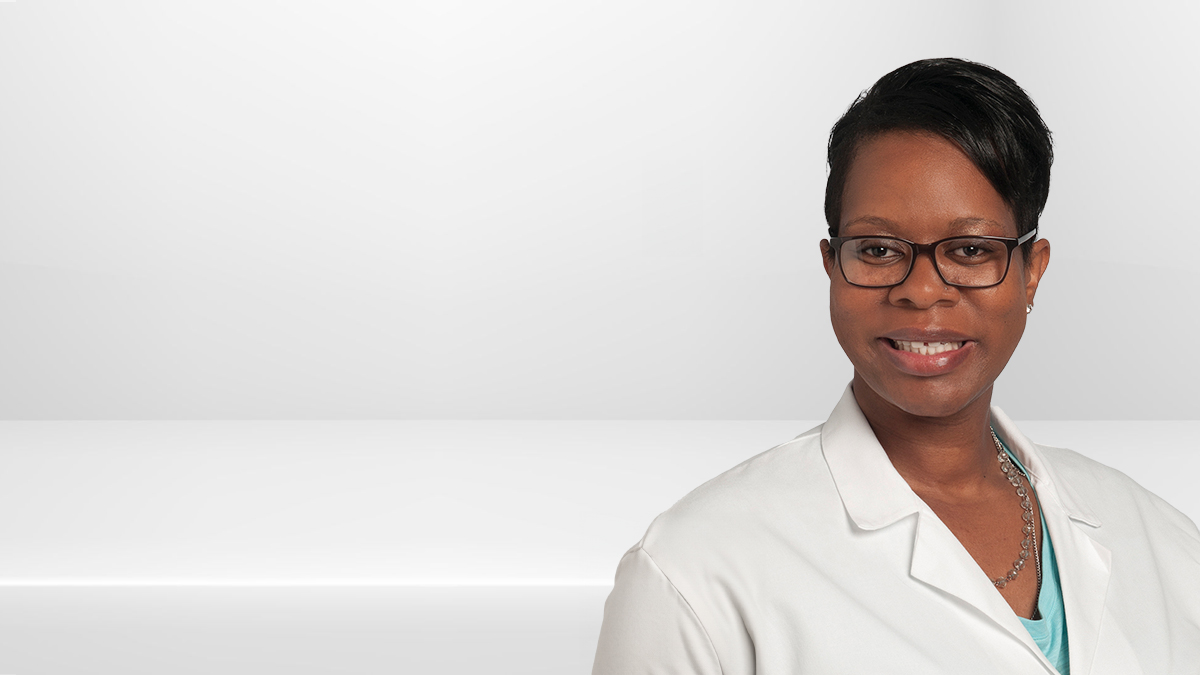
In this episode, our host, Erica Newlin, MD and Tamara Noy, CNM, DNP discuss the early OB visits and walk us through what to expect from different models of prenatal care.
Subscribe: Apple Podcasts | Podcast Addict | Spotify | Buzzsprout
Early OB Visits and Models of Prenatal Care
Podcast Transcript
Erica Newlin, MD:
Welcome to OB/GYN time, a Cleveland Clinic podcast covering all things obstetrics and gynecology. These podcast episodes are intended to help you better understand your health, leaving you feeling empowered to live your best. We hope you enjoy today's episode. Hi everyone. I'm your host, Erica Newlin, MD. Welcome to OB gyn time. During this season we are focusing on topics related to pregnancy and obstetric concerns. On this episode, I'd like to welcome Tamara Noy, who will be talking with us about the first OB visit and OB models of care. Thanks so much for joining me on the podcast.
Tamara Noy, CNM, DNP:
Thank you for having me. I'm so excited to be here.
Erica Newlin, MD:
Can you tell us about your role in the Cleveland Clinic and a little about your background?
Tamara Noy, CNM, DNP:
Sure. So I am a certified nurse midwife here at Cleveland Clinic. I'm actually one of 44 nurse midwives here. We are quite a robust team of midwives spread out across Northeast Ohio. And I actually have a role as the lead midwife at Fairview Hospital where outside of just catching babies and hanging out with really cool moms and families, I work on a variety of committees at Fairview Hospital and in our institute dealing with our pregnancy care companion, making sure that we are meeting the needs of the families in our communities, helping with clinical collaboration, and working with some of our outside partners to help spread the word on what midwives do and who we are.
Erica Newlin, MD:
Let's start by discussing the difference in OB providers. So when someone gets that initial positive pregnancy test and is looking to schedule their visits, their OB physicians, midwives, high risk OB specialists.
Tamara Noy, CNM, DNP:
So we, at Cleveland Clinic specifically, we have a lot of different providers that you can see. Generally those visits, especially here at our facility, they start with you seeing an advanced practice provider, whether that is a women's health nurse practitioner, a family health nurse practitioner, or a certified nurse midwife. We are all trained as nurses initially, and then we go on to school to get our master's degree specializing in women's health or in our case midwifery.
The other layer or tears of course, are OB/GYNs, which are, most people are most familiar with when they say, I'm going to my baby doctor. They're usually seen at OB/GYN. Our high risk doctors are maternal fetal medicine doctors and they do a ton of our ultrasounds and really read and evaluate all of those and work in collaboration with us as midwives and as a team. And they also see some of our more high risk patients who traditionally risk out of midwifery care and in some cases are a little bit more high risk than our OB/GYNs even see. And then of course, we work with physicians assistants as well in terms of seeing patients and and helping to meet the needs of the patients.
Erica Newlin, MD:
Yeah, I think here, and I think at a lot of institutions, a lot of hospitals, we, the OB physicians work very closely with our midwives and there's a lot of collaboration.
Tamara Noy, CNM, DNP:
I think collaboration is like the word of the year because patients need a lot of people to give 'em some input sometimes. And I, like I don't do all of the formal huge ultrasounds but our maternal fetal medicine doctors do. And there's certain things like C-sections or vacuum assisted deliveries or things along those lines that I don't do. But I'm very happy when I see my OB/GYN partners coming into a room to really help when I have a patient that has a need.
Erica Newlin, MD:
I think traditionally people associated midwifery care with low intervention or low risk people, whereas OB physicians would see higher risk patients. Would you say that that's true? Would you say that there is a gray area in between?
Tamara Noy, CNM, DNP:
So I think that there is magic in having low risk patients because you really get to just see the beauty of pregnancy is just an extension of who you are. It's not necessarily a medical condition that needs to be treated. As midwives we do specialize in seeing that low risk patient that is our patient population, primarily the patient who comes to us who maybe doesn't have cardiac issues, doesn't have preexisting medical conditions like hypertension or diabetes. Your age does not disqualify you from seeing a midwife. But I think that that the low risk patient is definitely where we function in our strongest suit because we specialize in normal. That is what a midwife does. But I can completely understand how our OB/GYN partners do enjoy seeing normal patients as well because following patients through all the way through birth and getting to do a vaginal delivery and not necessarily always ending in a C-section because they're so high risk, there's magic in that too.
Erica Newlin, MD:
I think the risk of kind of designated someone high risk or low risk-
... is very difficult sometimes 'cause we don't know how pregnancy will go for people often. And I think whether you're seeing a midwife or a physician, we really just want to support you through your journey.
Tamara Noy, CNM, DNP:
And I think when you start with that new OB, that everyone starts with an advanced practice provider and part of that is it lets the lower risk patients, if they're interested in continuing with us, then they get to know what midwives are and get to know what we do. So I think that that is nice as well.
Erica Newlin, MD:
Sure. When someone is looking into picking an OB provider, even outside of the Cleveland Clinic looking anywhere, how does someone find an OB provider in their area? How do they know that it's a good fit for them?
Tamara Noy, CNM, DNP:
So generally, I always tell people, look at your hospitals near you. So like the find a doc websites, Google around to see what's available to you. If you're looking at a specific hospital, you can always type in whatever is close to you to help you locate a provider that can take care of you.
Erica Newlin, MD:
I think it's worthwhile too, to think about your delivering hospital when-
... when looking at your providers and also considering NICU levels or referring hospitals.
Tamara Noy, CNM, DNP:
Absolutely. Especially nowadays when a lot of these hospital systems, when you look around, we don't have the smaller hospitals anymore. The bigger your city is, it's more of just these larger hospitals. So really looking at who's available, who's around you, where you'll deliver, that's important.
Erica Newlin, MD:
How would you know at that new OB visit whether your provider might or might not be a good fit for you?
Tamara Noy, CNM, DNP:
How'd you feel?
How did you feel? Did you feel like you were rushed? Did you feel like you weren't heard? Did you jive well with that person? Or does it seem like they're going to have a few more interventions than what you would like to have in your care? Those are questions of course, that you can ask or just ascertain through the conversation that you're having with that provider.
Erica Newlin, MD:
Ideally at the new OB visit, your provider has a good amount of time to spend with you and can go over the full prenatal care journey 'cause it's a long time.
Tamara Noy, CNM, DNP:
It is a long time. That prenatal care journey is brought to you in so many different ways. At the facility where we are here, Epic brings us something very beautiful called the Pregnancy Care Companion that patients are able to log into, take a look at and get a really clear understanding of what that prenatal journey is going to look like. I know like when you're in your new OB visit, it is a lot that gets placed on that first visit. So making sure you have your questions available is really helpful when you're coming to that visit.
Erica Newlin, MD:
For sure. That first visit can be very overwhelming.
Tamara Noy, CNM, DNP:
For everyone. Absolutely. It usually starts with us just sitting down talking to you. Sometimes if you haven't already had an ultrasound, an ultrasound gets included in that because we like to make sure that your dates are appropriate. Especially if you had like irregular cycles or things along those lines, we like to make sure that what's really eight weeks is really eight weeks and we're really dating this pregnancy properly.
Erica Newlin, MD:
What else might happen at a first OB visit?
So at your new OB visit, the big things that we do is we're going to sit down with you and we're going to get to know you. At least get to know you from a clinical standpoint. We get your H and P, which is like your history and your physical, learning about your history of your other pregnancies, learning about your mom's history with her pregnancies, anything that you've had in your past medical history or were you diabetic? Do you have hypertension? Things along those lines. Just really getting a baseline for things that could potentially affect this pregnancy. And things that we may need to include our OB/GYN partners or our maternal fetal medicine partners for.
If your PAP testing or your women's care testing like for STIs such as like gonorrhea and chlamydia, if those things are not up-to-date, we do collect those at that new OB visit as well in most cases. And we're usually doing an ultrasound at that visit as well to make sure that your dating is appropriate. So if you have cycles that are every 28 days like clockwork, I really expect to see a fetus that matches what I have in the computer versus if your cycles are, "I have no idea the last time I had one," then you know we take a look at your fetus and see what size it is, what age it is, and playing your pregnancy according to the dating that we receive.
Erica Newlin, MD:
At what time in a pregnancy should someone expect to schedule their new OB visit or be seen by a provider?
Tamara Noy, CNM, DNP:
Good question. So if you're having a ton of symptoms, you're nauseous, those kinds of things, we want to see you just to make sure we can treat your nausea, we want to treat the symptoms that you're having. But ideally if everything's going well, oh my gosh, y- you had a positive pregnancy test, we want to see you right around eight weeks. And that's just because we get better visualization when we're doing that ultrasound.
Erica Newlin, MD:
And I mentioned this on a prior episode, but it can be really hard to wait that. (laughs)
Tamara Noy, CNM, DNP:
(laughs) Oh my gosh. Especially if you're keeping it a secret from everybody that you know and you're not the best secret keeper, no (laughs) But yeah, it can be a little bit harder.
Erica Newlin, MD:
Yeah. It's truly we're not making people wait because we don't care. It's just like you mentioned, it's the best time to establish dating, the best time to ensure that this is a healthy pregnancy.
Erica Newlin, MD:
What lab work is usually ordered at that new OB visit?
Tamara Noy, CNM, DNP:
So outside of the ultrasound that we complete, we normally will order... I like to tell my patients when I see them, it's about six different categories of labs that we order. We always order a type and screen on every single patient. And that's because depending on what your blood type is, it may change the care that we do at 28 weeks and sometimes after delivery as well as you may need additional medications.
We look at your blood counts because anemia is real. We think we have wonderful, wonderful diets and (laughs) once we get those labs back, it's like oh-oh. And sometimes we can do iron infusions a little bit earlier or we can do simple things like changing your diet, increasing your proteins, or adding a supplement every other evening to help bring iron back into your diet. But the sooner we can treat it, the better it'll be as our babies do not have good iron stores when they are first-born. And the better we can plump it up or the better we can make it for pregnancy, the better it'll be moving forward for your baby and for yourself and delivery.
We look at infectious diseases, so like HIV, syphilis, the hepatitis is. We also look for gonorrhea and chlamydia so that we can can treat anything that's there or have you set up for a plan that's there. And we look at your vaccine status for things like rubella because that is one of our infections that can really cause some poor outcomes, not necessarily in this pregnancy but in pregnancies moving forward. And then we discuss genetic testing as well.
Erica Newlin, MD:
Sure. And we'll have another episode completely devoted to genetic testing so we can avoid getting in the weeds there.
Tamara Noy, CNM, DNP:
You can do a season on genetic testing. There's so much to talk about there.
Erica Newlin, MD:
And as you mentioned, a lot of our lab work is STD testing. And I always tell patients it's not 'cause we're profiling you or think that... It's just part of our guidelines.
Tamara Noy, CNM, DNP:
Absolutely. And if you think about how babies are coming out, the last thing you want is them to be exposed to infectious diseases that can impact A, their life moving forward and B, preterm labor risks and things along those lines as well.
Erica Newlin, MD:
Sure. And then what does prenatal care usually look like as you're moving forward? How often are visits scheduled?
Tamara Noy, CNM, DNP:
So if we're following a traditional prenatal schedule, visits are scheduled every four weeks. We see ya for the first 28 weeks and then every two weeks from 28 to 36 weeks. And then at 36 weeks we see you every week. Once you are over 40 weeks, we see you twice a week and then by 41 weeks and six days we want to meet your baby. And we see you more frequently as this baby gets bigger just because our risk factors for things increase.
Erica Newlin, MD:
And what's happening at those visits, why are we seeing people so often?
Tamara Noy, CNM, DNP:
We love to listen to babies. It's like the hallmark of my visit is listening to your baby and getting to know your baby. So we'll listen to your baby anywhere from, usually it's around a minute, I'll listen and hear that heartbeat and listen to the fluctuations in it. In addition to that, we measure your belly, especially once you are about 28 weeks and on because we need to make sure that the growth is appropriate and the weeks that you are and the measurement that we get in centimeters at about 28 weeks and on it should line up within one to two.
Erica Newlin, MD:
And then I'm sure you're the same, but I feel like I usually have educational points at each visit and things as we go through the cadence of visits.
Tamara Noy, CNM, DNP:
Absolutely. I tell patients all the time. I say, "I was a teacher before I was a nurse, so take this to the restroom with you. It is bathroom reading material."
So the after visit usually will have a lot of information in it and just a lot of education. And it's great for you to ask all your questions. Please bring them. We love questions.
Erica Newlin, MD:
Might someone have virtual OB visits?
Tamara Noy, CNM, DNP:
Absolutely. Especially after COVID. COVID was its own beast, but it really brought about the ability to provide care in different ways. So you can have virtual visits. Just speak with the people in your office so that you can get set up for 'em.
Erica Newlin, MD:
Do people usually see the same provider for each visit?
Tamara Noy, CNM, DNP:
Good question. Ideally, that's the goal. But at your new OB, remember everyone that comes through our facility does start with an advanced practice provider. And depending on the size of your facility where you are, it is very possible that you may not see the same provider. Ideally, the same people are in the same office. But your care team could include physicians, could include midwives, advanced practice providers, and PAs all from the same office depending on the size of your team.
Erica Newlin, MD:
Yeah, I think it's something worth asking if that new OB visit, how the office structures, their return visits, who might you see?
And who's going to be delivering you?
Tamara Noy, CNM, DNP:
Absolutely. Especially if we're using models like team birth where it is a collaborative model of care when you go to labor and delivery and if you're low risk, sometimes your care is going to be led by the midwife team such as at our hospital, we have three different hospitals in northeast Ohio, but one of our hospitals, which is Hillcrest Hospital, they actually have a completely midwifery lead model of care.
Erica Newlin, MD:
I think a lot of large hospital systems are moving towards that model.
Erica Newlin, MD:
Can you talk about group prenatal care?
Tamara Noy, CNM, DNP:
Absolutely. It is my favorite. So group prenatal care also referred to as centering pregnancy is a different way to provide prenatal care. But it's unique in that you actually get the same provider for almost all of your visits. So after your second OB visit, which is right around that 12 week mark, you transition into these group prenatal care sessions where you and about nine to 10 other couples or just you and about nine to 10 other birthing people are present and you're all about the same gestational age and you're all chatting about the exact same thing at the exact same time.
And these visits are really awesome because if you're like some people you don't ever wanna ask a question a day in your life, you'd rather go on Google. But there is always that one person in the room who's like, "I have a question," and this is the one time where you're excited about that girl because you're going to get the answers to the questions that maybe you were a little too afraid to ask.
And in addition to that, in those group prenatal visits, you get community, you get accountability because maybe you haven't done your glucose challenge test yet, but this person sitting next to you did and they're going to tell you, "Hey, before you go make sure you eat some protein because this happened to me." Or "It wasn't so bad. It tasted like orange tang," to give you a more realistic view. And then you're like, "Okay."
So you see a change in outcomes and a change in rates and patients that are actually showing up to more visits, especially in communities that are of modest means or communities where you don't necessarily have a balance in how the healthcare is provided. You have more patients showing up and more patients meeting those needs that have been set forth for our guidelines.
And instead of getting like two or three hours of education in your 15-minute visits, you're getting like 16 to 20 hours because those sessions are two hours each. And they're Monday through Friday at some locations and some places offer 'em on the weekends. Some facilities, depending on where you live, may offer 'em in the evenings so that it can meet your needs. And if you have a partner, bring your partner.
Erica Newlin, MD:
Yeah, I think you really highlighted the benefits of centering. Yeah, I think it's really nice 'cause people can talk to each other and really have that time.
Tamara Noy, CNM, DNP:
And it's still unique. I had a group that they actually just turned five. They're called my Lucky Charms 'cause they were all due in March, hence the Lucky Charms. And they all went to kindergarten and this was the patients decided to put a Facebook group together and I guess they thought I was cool. They added me to it. So now I get to watch these babies grow up and it's just really cool. And the community that they built.
Erica Newlin, MD:
What questions should someone be asking at their new OB visit?
Tamara Noy, CNM, DNP:
I think this session definitely covered a lot of 'em. I will answer one big question that I get a lot is where do you deliver? all midwives that are certified nurse midwives that work for, I will say for my hospital system in particular, we all deliver in a hospital. So knowing where your midwife is going to deliver, your provider is going to deliver is important. I know a lot of these larger hospital systems, you can see any provider in that hospital system and deliver where you need to because we have electronic medical records.
But depending on where you live, that may not always be the case. So knowing where your provider delivers is important. Understanding what's going to happen at your visits when your next ultrasounds are going to be, because there's so much more detection of issues and, and things that may lead to further intervention down the line as we have more advanced technology. So understanding your next ultrasounds, understanding, you know, who all's going to be at your delivery, what can I eat? Can I still change my kitty litter? You know, those kind of questions. The things that impact your activities of daily life, I would definitely ask questions about those things.
Erica Newlin, MD:
And I think people have some confusion about certified nurse midwives and like what we'd refer to as a lay midwife. Can you describe the difference?
Tamara Noy, CNM, DNP:
Sure. So certified nurse midwives are midwives that are trained with our master's degrees. So we're all registered nurses for the state that we work in. And then we went back to school for an additional two, two and a half years and trained to become midwives and advanced practice nurses. So we took another board certification exam and became certified nurse midwives. The majority of us do work in hospital settings, although there are some that do home birth and some that work in community birth settings.
All lay midwives are not required to be nurses first and all lay midwives are not required to take board exams. So some of the midwives that identify as lay midwives, it's a tradition that was passed down from their grandmother who passed it on to their mother and they learned that way. And that was the education that some received, especially in more rural communities.
But then there's some not in the state of Ohio that are certified professional midwives where again, they're not required to be nurses first, but then they went to an additional training. They received, you know, education and training in that way, took a board exam and then they are state certified wherever they reside. But in Ohio it's a certified nurse midwife and then additional midwives are considered lay midwives.
Erica Newlin, MD:
You briefly alluded to home births. I think a lot of people who are considering home births might be fearful of getting prenatal care in a hospital system. Can you talk about how there might still be value in prenatal care even if someone's planning a home birth?
Tamara Noy, CNM, DNP:
Absolutely. We call it co-care here at the facility where I work at Cleveland Clinic. And what it is, is it's our opportunity as the midwives that would be receiving you here in the hospital to get to know you. And for that, the biggest things that we really look for are having the big labs that we discussed, having those completed. And if you have a certified nurse midwife that you're working with outside of the hospital, those are labs that you can definitely get through her practice. Anatomy scans, that's one of the ultrasounds that has a look. Usually people call it their gender scan 'cause they find out what they're having.
But for us, when we look at an anatomy scan, it's telling us the heart is in the right place, the lungs are in the right place. We have all of the organs that we're anticipating so that if you were to come in and we knew nothing about you, at least we know that this baby isn't anticipated to be a healthy baby.
We always recommend a glucose screen, especially if you're living in a major metropolitan area, make sure that you get your glucose screen done because you could be that person with underlying gestational diabetes and in that case your baby's going to grow in a way that it may not actually fit through your pelvis. That is the one time when I say you can grow a baby that is too big for your body.
Group beta strep testing is another area where we really want to make sure that you get that testing done. And then when your lay midwife or your community midwife brings you in, please come with your patient because you've been with them, you've been with them the 96 hours or whatever, you've been at home and you're the person who's going to give us the best report.
I think that one of the biggest things that we have to do is stop penalizing our lay midwives for caring for patients outside of the hospital because I think it does a huge disservice if we just leave patients in the ED and we never hear from that lay midwife again because we don’t know what happened.
Erica Newlin, MD:
Yeah, I think home birth in general is a contentious issue-... and I don't intend to get into that, but I think
I do want to underline that my goal in caring for patients is not to kind of get my viewpoint in on, on their delivering plan, but just be able to, to care for them and give them the prenatal care that they need and also just be able to discuss those risks in a completely non-judgmental and open manner.
Erica Newlin, MD:
Well thanks so much for joining us. Anything you'd like to add?
Tamara Noy, CNM, DNP:
The only thing I would add is, you know, if you really know that you're looking for an unmedicated birth or you're looking for something that is very low intervention, definitely see a midwife. Come see us at least once and we can talk about your birth plan, we can talk about your preferences. If you absolutely love your OB physician, please, we're not going to hold you hostage. You can definitely go back, but let's talk about your birth plan and have a good understanding of what it is that you're planning to do. And we have additional resources that we may be able to provide you so that you can be successful in achieving that unmedicated birth.
Erica Newlin, MD:
Yeah, and I really want to underline how much we can collaborate too 'cause a lot of times I'll have patients in my practice that maybe did quote "Risk out" of midwifery care, but we can try to give people their low intervention vision for their birth and work together.
Tamara Noy, CNM, DNP:
Absolutely. It's a wishlist when we're writing our birth plan. So whatever we can achieve on that wishlist is going to help impact the care that you receive and help impact your perception of your birth.
Erica Newlin, MD:
Well, thanks so much for joining us.
Tamara Noy, CNM, DNP:
Thank you.
Erica Newlin, MD:
Thank you for listening to this episode of OB/GYN Time. We hope you enjoyed the podcast. To make sure you never miss an episode, subscribe wherever you get your podcast or visit clevelandclinic.org/obgyntime.
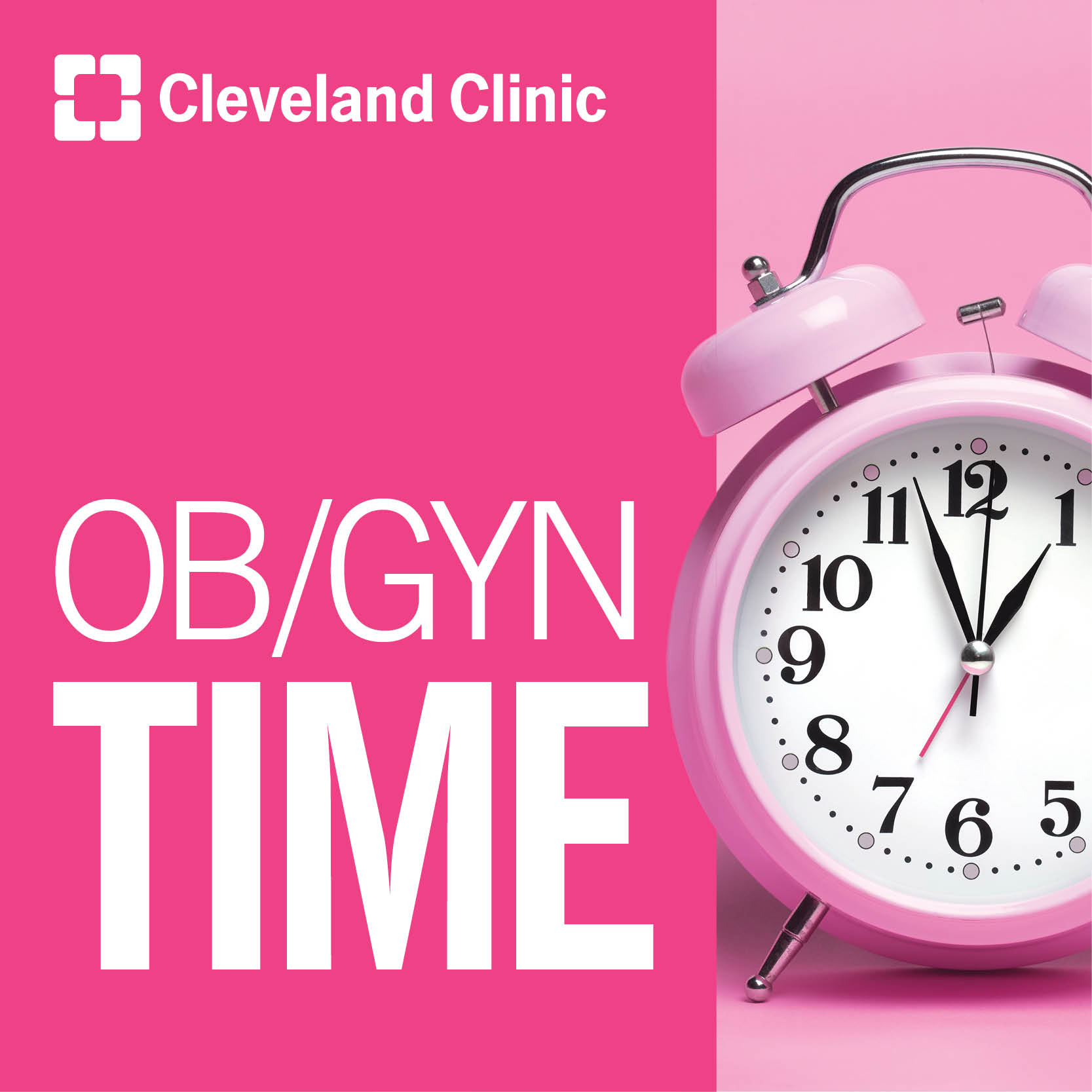
Ob/Gyn Time
A Cleveland Clinic podcast covering all things women's health from our host, Erica Newlin, MD. You'll hear from our experts on topics such as birth control, pregnancy, fertility, menopause and everything in between. Listen in to better understand your health and be empowered to live your best.
